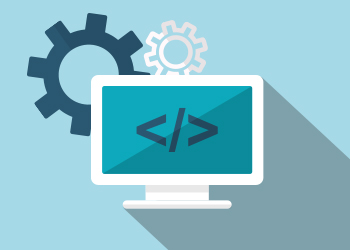Oracle

교육개요
* 09:30 ~ 17:00 (30시간 / 5일) (점심시간:1시간30분)
이 과정은 자바 기반의 객체 지향 어플리케이션을 설계하는 데 사용되는 핵심적인 응용
프로그래밍 인터페이스(API)들을 다루고, 기존 클래스의 서브 클래스를 만들거나 추상 클래스를 확장하는 방법, 인터페이스를 사용하는 프로그래밍 기법을 배우게 됩니다.
예외를 적절하게 활용하는 방법과 컬렉션 프레임워크의 사용 방법 등을 학습하고 파일 시스템의 파일과 디렉터리를 조작하는 응용 프로그램을 개발해 볼 수 있습니다.
또한 멀티스레드 프로그램을 올바르게 작성하는 방법과 JDBC를 사용하여 데이터베이스와
연동하는 프로그램을 작성하는 방법도 학습할 수 있습니다. 아울러 자바 SE 7에 추가된 자바
언어의 새로운 모습과 NIO.2 등 향상되고 개선된 사항들을 확인하실 수 있습니다.
이 과정은 자바 언어를 활용한 개발 능력을 향상시킬 수 있을 뿐만 아니라 오라클 인증 자바
프로그래머 자격(Oracle Certified Professional, Java SE 7 Programmer)의 준비에도 도움이
됩니다.
교육목표
- Process strings using a variety of regular expressions
- Create high-performing multi-threaded applications that avoid deadlock
- Localize Java applications
- Create applications that use the Java Collections framework"
수강대상
- 여러 분야에서 자바 기술을 활용하고자 하는 개발자
- OCP, Java SE 7 Programmer 자격을 취득하고자 하는 분
선수과목
없음
강의내용
1. Java Platform Overview
Defining how the Java language achieves platform independence
Differentiating between the Java ME, Java SE, and Java EE Platforms
Evaluating Java libraries, middle-ware, and database options
Defining how the Java language continues to evolve
2. Java Syntax and Class Review
Creating simple Java classes
Creating primitive variables
Using operators
Creating and manipulate strings
Using if-else and switch statements
Iterating with loops: while,do-while,for,enhanced for
Creating arrays
Using Java fields, constructors, and methods
3. Encapsulation and Subclassing
Using encapsulation in Java class design
Modeling business problems using Java classes
Making classes immutable
Creating and use Java subclasses
Overloading methods
4. Overriding Methods, Polymorphism, and Static Classes
Using access levels: private, protected, default, and public.
Overriding methods
Using virtual method invocation
Using varargs to specify variable arguments
Using the instanceof operator to compare object types
Using upward and downward casts
Modeling business problems by using the static keyword
Implementing the singleton design pattern
5. Abstract and Nested Classes
Designing general-purpose base classes by using abstract classes
Constructing abstract Java classes and subclasses
Applying final keyword in Java
Distinguish between top-level and nested classes
6. Interfaces and Lambda Expressions
Defining a Java interface
Choosing between interface inheritance and class inheritance
Extending an interface
Defaulting methods
Anonymous inner classes
Defining a Lambda Expression
7. Collections and Generics
Creating a custom generic class
Using the type inference diamond to create an object
Creating a collection by using generics
Implementing an ArrayList
Implementing a TreeSet
Implementing a HashMap
Implementing a Deque
Ordering collections
8. Collections Streams, and Filters
Describing the Builder pattern
Iterating through a collection using lambda syntax
Describing the Stream interface
Filtering a collection using lambda expressions
Calling an existing method using a method reference
Chaining multiple methods together
Defining pipelines in terms of lambdas and collections
9. Lambda Built-in Functional Interfaces
Listing the built-in interfaces included in java.util.function
Core interfaces - Predicate, Consumer, Function, Supplier
Using primitive versions of base interfaces
Using binary versions of base interfaces
10. Lambda Operations
Extracting data from an object using map
Describing the types of stream operations
Describing the Optional class
Describing lazy processing
Sorting a stream
Saving results to a collection using the collect method
Grouping and partition data using the Collectors class
11. Exceptions and Assertions
Defining the purpose of Java exceptions
Using the try and throw statements
Using the catch, multi-catch, and finally clauses
Autoclose resources with a try-with-resources statement
Recognizing common exception classes and categories
Creating custom exceptions
Testing invariants by using assertions
12. Java Date/Time API
Creating and manage date-based events
Creating and manage time-based events
Combining date and time into a single object
Working with dates and times across time zones
Managing changes resulting from daylight savings
Defining and create timestamps, periods and durations
Applying formatting to local and zoned dates and times
13. I/O Fundamentals
Describing the basics of input and output in Java
Read and write data from the console
Using streams to read and write files
Writing and read objects using serialization
14. File I/O (NIO.2)
Using the Path interface to operate on file and directory paths
Using the Files class to check, delete, copy, or move a file or directory
Using Stream API with NIO2
15. Concurrency
Describing operating system task scheduling
Creating worker threads using Runnable and Callable
Using an ExecutorService to concurrently execute tasks
Identifying potential threading problems
Using synchronized and concurrent atomic to manage atomicity
Using monitor locks to control the order of thread execution
Using the java.util.concurrent collections
16. The Fork-Join Framework
Parallelism
The need for Fork-Join
Work stealing
RecursiveTask
RecursiveTask
17. Parallel Streams
Reviewing the key characteristics of streams
Describing how to make a stream pipeline execute in parallel
List the key assumptions needed to use a parallel pipeline
Defining reduction
Describing why reduction requires an associative function
Calculating a value using reduce
Describing the process for decomposing and then merging work
Listing the key performance considerations for parallel streams
Database Applications with JDBC
Defining the layout of the JDBC API
Connecting to a database by using a JDBC driver
Submitting queries and get results from the database
Specifying JDBC driver information externally
Performing CRUD operations using the JDBC API
18. Localization
Describing the advantages of localizing an application
Defining what a locale represents
Read and set the locale by using the Locale object
Building a resource bundle for each locale
Calling a resource bundle from an application
Chznging the locale for a resource bundle
기타
교육비 부가세포함
